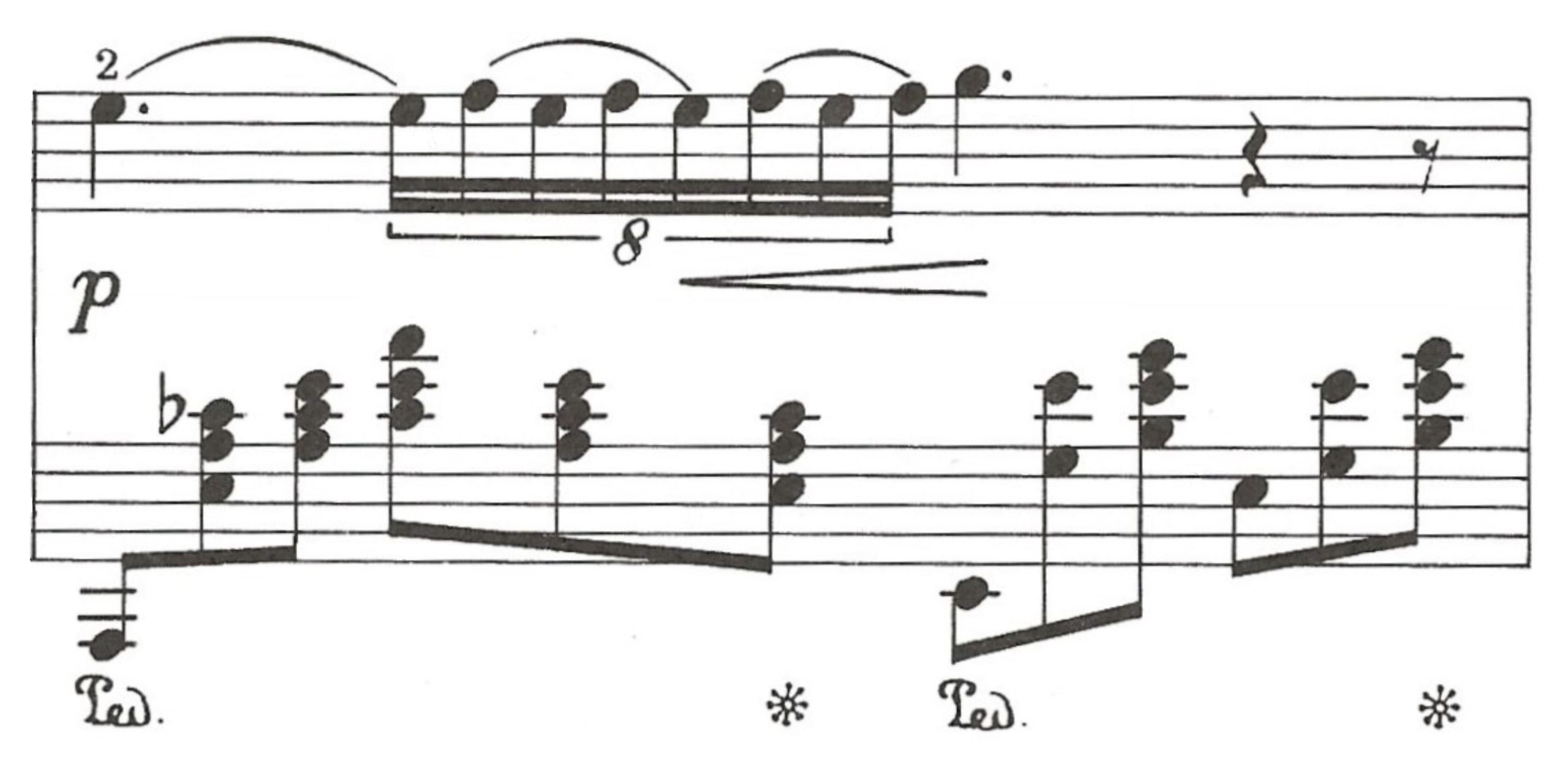Chopin Nocturne, Op. 9, No. 2: 8 against 3

Measure 29: 8 against 3
Chopin Nocturne, Op. 9, No. 2 (E-flat Major) has an 8 v 3 polyrhythm that can seem perplexing. Here’s some advice about how to learn to play it.
For ease of discussion, I’ve numbered the 16ths.
- Ignore the first beat.
- Play RH alone, beginning on beat 2, ignoring the tie. Be absolutely deliberate about the articulation. Emphasize notes #1 and #5, so that you feel two groups of four.
- Add the LH (still ignoring the first beat). End with the E-flat on the third beat. Place the second chord exactly in between notes #3 and #4; place the third chord between notes #6 and #7. Do this slowly and deliberately. Gradually speed up, but expect it to take time before it feels natural. In the meantime, make sure that the 16ths remain even.

- Next, add the RH first beat, but not the LH. Observe the tie. Try to let muscle memory control the 16ths – including their evenness – and listen for the characteristic feel of triplets in the LH. You will achieve success only if the 16ths remain impeccably even and the triplets are placed precisely. When you do achieve success, gradually speed up to whatever degree you can without sacrificing evenness.
- Before adding the first beat LH, be sure you’re fully conscious of the speed of the triplets you’ve already created on the second beat. They should be quite slow; you need to match this speed. Even so, be prepared for a difficult transition from the first beat to the second. It’s likely that you’ll accidentally play the initial 16ths too quickly.
- Don’t expect to master this the first time you practice it. You must, without question, reinforce it the next day, and continue to reinforce it over the course of a few more days, before it will feel secure.
Want to avoid having this nocturne sound like a waltz? Click here.